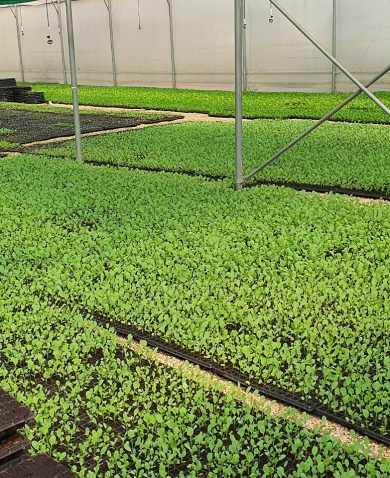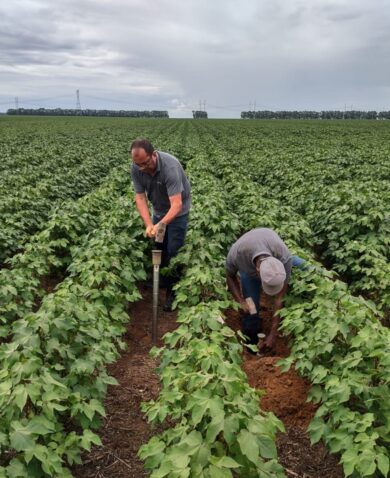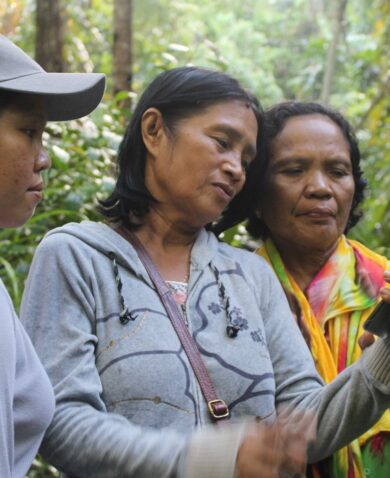
3 Questions with Tim Sparkman on Capturing the Impact of Investment Facilitation
August 23, 2023 | 5 Minute ReadThe Investment Readiness Learning Initiative's innovative approach to measuring impact
Chemonics’ Investment Readiness Learning Initiative is a first-of-its-kind, multi-year, multi-project learning initiative designed to deepen the evidence base for investment readiness factors, develop strategies for greater private sector engagement, and analyze other critical aspects of investment facilitation in emerging markets. The initiative, conducted in partnership with The Canopy Lab, works with two Chemonics-led, USAID-funded programs, the Uganda Strategic Investment Activity and the DRC Investment Facilitation Activity.
Learn more about the Investment Readiness Learning Initiative’s innovative approach to more accurately capturing the impact of investment facilitation:
Below, please find the full interview with Tim Sparkman, managing partner at The Canopy Lab.
1. What does “outcomes measurement” mean in the context of an investment facilitation activity?
Typically, in investment facilitation, outcome measurement tends to be focused at the level of the investee itself – in other words, the actor that’s receiving the investment. Now, there have been a lot of initiatives over the years that have worked to try to expand the measurement of outcomes beyond the investee, but typically what we see is that it’s really focused at the at the investee level.
Backing up quickly, when we talk about outcome measurement, we’re talking about what happens after the outputs, which are typically the immediate result of an activity. You have outcomes, which are the result of the behavior change inspired by the output. Impact is the broader change that you expect to see – poverty alleviation, for example. Outcome measurement is situated at a key point in that process of thinking through the pathway to impact. If we’re confining our definition of outcome measurement to what’s happening at the investee level, then we’re missing a lot of really interesting stuff that that might be – almost certainly is – happening in the broader network of actors that are around the investee.
As an example, say that a project supports an agricultural cooperative to attract an impact investment. This is designed to improve its processing capacity and improve its working capital amounts so that it can buy a much larger volume of product from the smallholder farmers who are members of the cooperative. Typically, the measurements of the outcome for that investment would be focused on performance of the agricultural cooperative itself. And that misses the opportunity to consider what happens at the level of the farmer. Are there changes at the farm level that indicate that this is a positive impact investment, or are there things that might indicate negative outcomes that we need to be worried about? If your typical farmer has a significant increase in income as a result of the investment made, what do they end up doing with the money? Are there larger knock-on effects, like a change in the time burden of the women in the household, or a change in her agency? Are there changes in the ability and willingness of the family to send children to school, or are they more likely to keep the children at home to continue working on the farm and continue supporting the family income? All of these questions are things that can’t be answered by simply focusing our outcome measurement at the level of the investee. We have to move beyond that to get a better picture of what’s happening in the in the broader ecosystem around an impact investment.
2. What industry trends are you seeing in impact and outcomes measurement of investment facilitation programs?
I think there are two broader trends that we’re seeing in impact and outcome measurements of investment facilitation projects.
One is a greater willingness to pull from some of the other fields in economic development, especially market systems development or systems thinking. We’ve seen an increased interest in taking the tools and the concepts developed through market systems thinking, and applying them to better understand the impact created or fostered by investment facilitation initiatives. Market systems development takes a wider lens approach. It’s essentially like thinking about both the forest and the trees at the same time. Typical development tends to be very good at focusing on the trees; it can reach out to them and measure them precisely. Understanding what’s happening in the forests around the trees is a whole different challenge. Market systems work tends to start with an understanding of what’s happening in the forest, then try to influence a few of the trees and measure its impact by what changes in the broader ecosystem of economic actors. Taking that broader ecosystem view helps us improve the quality and the availability of outcome data. It helps us fill out a bigger picture by pointing our attention toward where the impact of an investment might lie. It helps us to view the impact beyond just the investee level and measure it on a wider range of community stakeholders.
The second trend, which is somewhat similar to that, is the embrace of more qualitative data. Quantitative data for a long time has been the undisputed heavyweight champion of impact assessment, but there’s a lot of really good, useful, nuanced qualitative data out there that can be gathered in a relatively rigorous manner and used for understanding impact, and driving continual program improvement. There are a few different techniques that have been established over the years and can be employed by practitioners. It helps us move beyond the shortcoming of just looking at quantitative data (like gross profit, number of suppliers, volume of throughput, sales, access to export buyers, etc.) and look at the qualitative changes that are happening in the market system around those actors, which may be related to an investment fostered by an investment facilitation project.
3. How do you anticipate the study of outcomes measurement for investment facilitation to evolve in the future?
As investment facilitation continues to be an important tool in the toolbox for economic development, we have to continue to evolve how we measure it in order to better capture project impact. That’s exactly what we’re trying to do with the Investment Readiness Learning Initiative.
We have three lines of research under the initiative. In the first one, we’re looking at six investees, three in Uganda and three in the Democratic Republic of Congo (DRC). We’ve captured a significant amount of baseline data around about the suppliers of five of these investees. Some are relatively large farmers, and this was uncovered in the in the baseline survey, but the vast majority are smallholder farmers. We’re looking over the course of a couple years to detect whether we can see changes at the farm level that are related to the investments made at the processor level. The sixth investment is with a wholesale financier. We’re looking to see whether there are changes in their performance which we can link back to the investment that was made.
The second piece of research is trying to parse the factors that that imply a firm is investable. With so many firms looking for impact investment, there are actually very few that are able to secure it in the end. In the DRC and Uganda, we have two pieces of research using a qualitative approach to data collection, looking at the factors that determine whether a firm is investable in the DRC, and focusing specifically on firms that are owned and managed by women in Uganda.
The third line of research is looking at the Uganda project’s influence on the ecosystem around impact investment itself. There are a large number of small business development service providers in Uganda that are working with impact investment firms, investees, and several different donor projects. We conducted a social network analysis mapping out their relationships. We hope over the course of the initiative to be able to chart changes in that ecosystem around those actors, and tie them back to the influence of the project.
These initiatives that are putting a bit of extra effort into the data collection exercise, asking some larger [questions] around what might be the more interesting changes that relate to impact investment. This is the direction that we’d like to see the impact investment space go. It’s very feasible. The tools are there, and generally the resources are there. I think we’re looking at the opportunity to do some really interesting work in this space in the next few years.











































